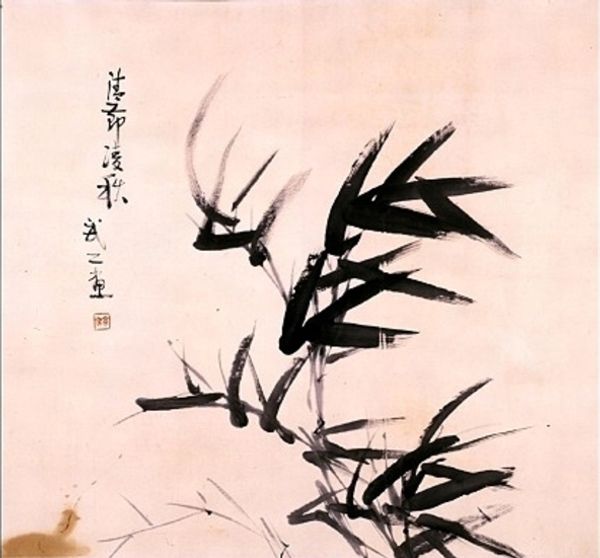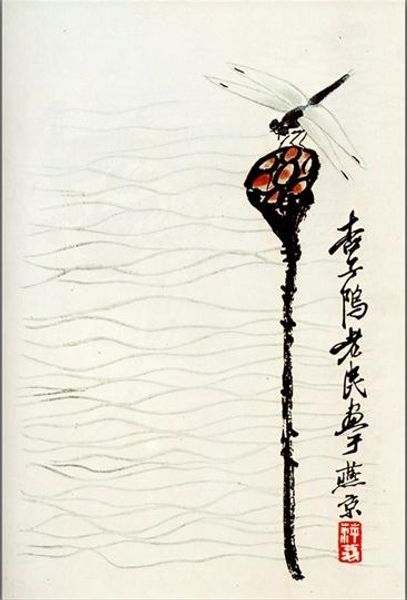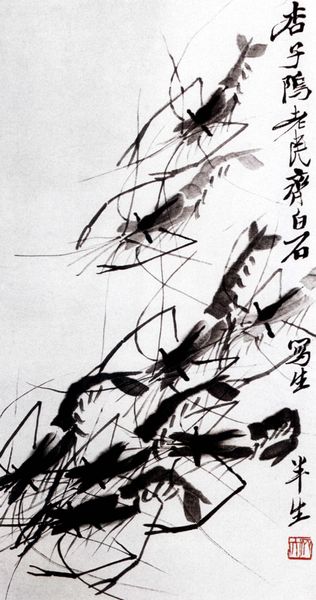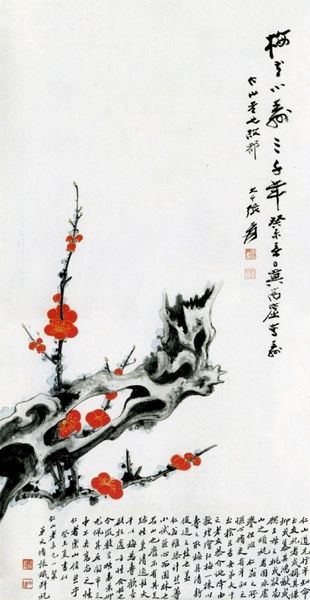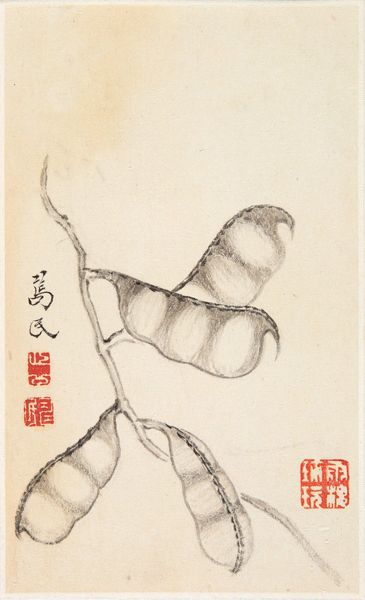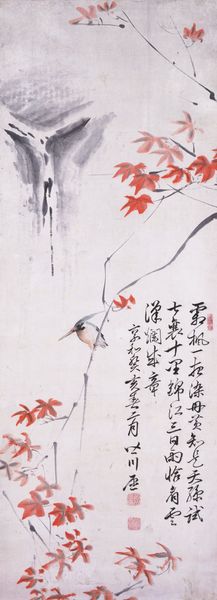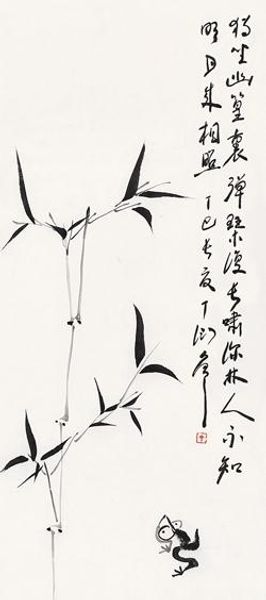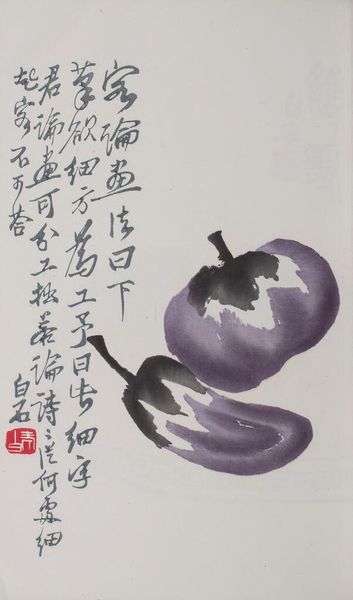
painting, paper, ink
#
painting
#
asian-art
#
landscape
#
bird
#
figuration
#
paper
#
ink
#
line
#
organism
#
realism
Copyright: Public domain China
Curator: Let's turn our attention to Qi Baishi's "Sparrow on a Branch," created in 1953 using ink on paper. It's a simple yet elegant composition. Editor: A tiny sentinel! That's the feeling I get immediately. So fragile perched there on that limb. The minimalism amplifies its vulnerability, somehow. Curator: It is a powerful work when we consider Qi Baishi's socio-political context. We might consider how this image subverts the symbolic and artistic dominance of established cultural elites. The bird, a humble creature, as the central theme is revolutionary in its own way. Editor: Yes! Almost punk rock! It’s this gorgeous tension, right? That traditional technique used for… not so traditional subject matter. I can feel Qi Baishi laughing at all the stuffy art snobs. You know? Curator: He gives voice, through representation, to marginalized bodies. And this little bird, situated within the power structure…its gaze…it sees things. Editor: Totally! It's not just *any* bird. It *knows* things. Like a tiny, feathered witness! What kind of cultural messages were usually conveyed with nature paintings in those times? Was it always flowers or landscapes or… Curator: Think dragons, phoenixes, peonies—symbols of wealth and power, imperial iconography. Baishi's choice of this everyday sparrow and a single, bare branch really shakes things up. He democratizes art by looking at what's usually overlooked. Editor: Beautiful! Absolutely rebellious in its simplicity. I'll never look at a sparrow the same way again! Curator: Nor should you! "Sparrow on a Branch" allows us to reassess how we attribute value, culturally and artistically. Editor: You got it! Qi Baishi, that sly revolutionary… painting sparrows and blowing our minds, one tiny brushstroke at a time!
Comments
No comments
Be the first to comment and join the conversation on the ultimate creative platform.

